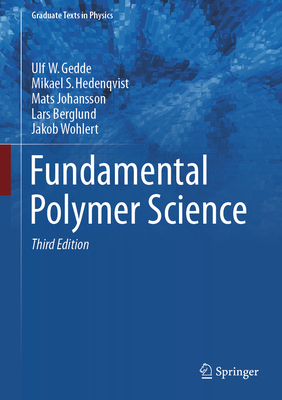Laboratory Experiments for Chemistry: The Central Science, 14/e (SI Edition)(Paperback)
暫譯: 化學實驗室實驗:中央科學,第14版(國際單位制版)(平裝本)
Theodore E. Brown , H Eugene LeMay , Bruce E. Bursten , Catherine Murphy , Patrick Woodward , Matthew E. Stoltzfus
- 出版商: Pearson FT Press
- 出版日期: 2017-12-14
- 售價: $980
- 貴賓價: 9.8 折 $960
- 語言: 英文
- 頁數: 748
- ISBN: 129222133X
- ISBN-13: 9781292221335
-
相關分類:
化學 Chemistry
立即出貨 (庫存=1)
買這商品的人也買了...
-
 $1,420Signals & Systems, 2/e (NIE-Paperback)
$1,420Signals & Systems, 2/e (NIE-Paperback) -
 複變函數與應用, 9/e (Brown: Complex Variables and Applications, 9/e)(授權經銷版)
複變函數與應用, 9/e (Brown: Complex Variables and Applications, 9/e)(授權經銷版)$680$646 -
流體力學 (Hibbeler: Fluid Mechanics)
$680$666 -
 流體力學 (Potter : Mechanics of Fluids, 4/e)(SI版)
流體力學 (Potter : Mechanics of Fluids, 4/e)(SI版)$680$666 -
 流體力學 (Cengel, 3/e) (授權經銷版)
流體力學 (Cengel, 3/e) (授權經銷版)$950$903 -
 Biological Science, 6/e (Paperback)
Biological Science, 6/e (Paperback)$1,380$1,352 -
 $594手把手教你設計 CPU-RISC-V 處理器篇
$594手把手教你設計 CPU-RISC-V 處理器篇 -
 C 程式設計藝術, 8/e (國際版)(附部分內容光碟)(C: How to Program, 8/e)
C 程式設計藝術, 8/e (國際版)(附部分內容光碟)(C: How to Program, 8/e)$840$756 -
 生物統計學, 2/e (修訂版) (Pagano:Principles of Biostatistics, 2/e)
生物統計學, 2/e (修訂版) (Pagano:Principles of Biostatistics, 2/e)$720$706 -
 計算機概論, 4/e (Forouzan: Foundations of Computer Science, 4/e)
計算機概論, 4/e (Forouzan: Foundations of Computer Science, 4/e)$580$568 -
 Principles & Practice of Physics <習作> (GE-Paperback)
Principles & Practice of Physics <習作> (GE-Paperback)$1,000$980 -
 Chemistry: An Atoms First Approach, 3/e (AE-Paperback)
Chemistry: An Atoms First Approach, 3/e (AE-Paperback)$1,580$1,548 -
 $374樂高城市搭建指南 搭建你自己的迷你樂高城市
$374樂高城市搭建指南 搭建你自己的迷你樂高城市 -
 超圖解 ESP32 深度實作
超圖解 ESP32 深度實作$880$695 -
 聰明工作者都會的防呆技術:出錯時最糟的回應是「我下次會注意」!看看工程專家如何設計工作機制,犯錯不會被罵還能獲得好評。
聰明工作者都會的防呆技術:出錯時最糟的回應是「我下次會注意」!看看工程專家如何設計工作機制,犯錯不會被罵還能獲得好評。$360$306 -
 Mastering Embedded Linux Programming, 3/e (Paperback)
Mastering Embedded Linux Programming, 3/e (Paperback)$2,480$2,356 -
 Understanding Process Dynamics and Control
Understanding Process Dynamics and Control$4,820$4,579 -
 機器人與專題製作 (附範例光碟)
機器人與專題製作 (附範例光碟)$390$351 -
 Chemistry: The Central Science in SI Units, 15/e (GE-Paperback)
Chemistry: The Central Science in SI Units, 15/e (GE-Paperback)$1,450$1,421 -
 Foundations of Computer Science, 5/e (Paperback)
Foundations of Computer Science, 5/e (Paperback)$1,360$1,333 -
 工業配電, 7/e
工業配電, 7/e$520$468 -
 Water and Wastewater Engineering, Volume 1: Hydraulics, Hydrology and Management
Water and Wastewater Engineering, Volume 1: Hydraulics, Hydrology and Management$5,990$5,691 -
 Heat and Mass Transfer: Fundamentals and Applications, 6/e (SI Units) (Paperback)
Heat and Mass Transfer: Fundamentals and Applications, 6/e (SI Units) (Paperback)$1,280$1,254 -
 計算機概論, 5/e (Forouzan: Foundations of Computer Science, 5/e)
計算機概論, 5/e (Forouzan: Foundations of Computer Science, 5/e)$640$627
商品描述
本書序言
●Text references to the corresponding sections of Chemistry the Central Science.
●All experiments carefully edited for accuracy, safety, and cost.
●Give It Some Thought (GIST) questions to aid the student in understanding the principles exemplified by the experiment.
●Experiments concerning solutions, polymers, and hydrates.
●All answers to questions checked for accuracy.
●Helpful hints added to instructors in the Annotated Instructor’s Edition (AIE).
本書特色
●NEW! Text references to the corresponding sections of Chemistry the Central Science.
●All experiments carefully edited for accuracy, safety, and cost.
●NEW! Give It Some Thought (GIST) questions to aid the student in understanding the principles exemplified by the experiment.
●NEW! Experiments concerning solutions, polymers, and hydrates.
●All answers to questions checked for accuracy.
●NEW! Helpful hints added to instructors in the Annotated Instructor’s Edition (AIE).
商品描述(中文翻譯)
本書序言
● 文字參考《化學:中央科學》的相應章節。
● 所有實驗經過仔細編輯,以確保準確性、安全性和成本效益。
● 提供「思考一下」(GIST)問題,幫助學生理解實驗所示範的原則。
● 涉及溶液、高分子和水合物的實驗。
● 所有問題的答案均經過準確性檢查。
● 在註解教師版(AIE)中為教師添加了有用的提示。
本書特色
● 新增!文字參考《化學:中央科學》的相應章節。
● 所有實驗經過仔細編輯,以確保準確性、安全性和成本效益。
● 新增!提供「思考一下」(GIST)問題,幫助學生理解實驗所示範的原則。
● 新增!涉及溶液、高分子和水合物的實驗。
● 所有問題的答案均經過準確性檢查。
● 新增!在註解教師版(AIE)中為教師添加了有用的提示。
目錄大綱
1.Basic Laboratory Techniques
2.Identification of Substances by Physical Properties
3.Separation of the Components of a Mixture
4.Chemical Reactions
5.Chemical Formulas
6.Chemical Reactions of Copper and Percent Yield
7.Chemicals in Everyday Life: What Are They and How Do We Know?
8.Gravimetric Analysis of a Chloride Salt
9.Solubility and the Effect of Temperature on Solubility
10.Paper Chromatography: Separation of Cations and Dyes
11.Molecular Geometries of Covalent Molecules: Lewis Structures and the VSEPR Model
12.Atomic Spectra and Atomic Structure
13.Behavior of Gases: Molar Mass of a Vapor
14.Determination of R: The Gas Law Constant
15.Activity Series
16.Electrolysis, the Faraday, and Avogadro’s Number
17.Electrochemical Cells and Thermodynamics
18.The Chemistry of Oxygen: Basic and Acidic Oxides and the Periodic Table
19.Freezing Point Depression
20.Titration of Acids and Bases
21.Reactions in Aqueous Solutions: Metathesis Reactions and Net Ionic Equations
22.Colorimetric Determination of an Equilibrium Constant in Aqueous Solution
23.Chemical Equilibrium: Le Châtelier’s Principles
24.Hydrolysis of Salts and pH of Buffer Solutions
25.Determination of the Dissociation Constant of a Weak Acid
26.Titration Curves of Polyprotic Acids
27.Determination of the Solubility-Product Constant for a Sparingly Soluble Salt
28.Heat of Neutralization
29.Rates of Chemical Reactions I: A Clock Reaction
30.Rates of Chemical Reactions II: Rate and Order of H2O2 Decomposition
31.Introduction to Qualitative Analysis
32.Abbreviated Qualitative Analysis Scheme
Part I: Chemistry of Group 1 Cations: Pb2+, Ag+, Hg22+
Part II: Chemistry of Group 2 Cations: Pb2+, Cu2+, Bi3+, Sn4+
Part III: Chemistry of Group 3 Cations: Fe3+, Ni2+, Mn2+, Al3+
Part IV: Chemistry of Group 4 Cations: Ba2+, Ca2+, NH4+, Na+
Part V: Chemistry of Anions: SO42—, NO3—, CO32—, Cl—, Br—, I—, CrO42—, PO43—, S2—, SO32—
Part VI: Analysis of a Simple Salt
33.Molarity, Dilutions, and Preparing Solutions
34.Solubility and Thermodynamics
35.Analysis of Water for Dissolved Oxygen
36.Preparation and Reactions of Coordination Compounds: Oxalate Complexes
37.Oxidation-Reduction Titrations I: Determination of Oxalate
38.Enthalpy of Vaporization and Clausius-Clapeyron Equation
39.Oxidation-Reduction Titrations II: Analysis of Bleach
40.Molecular Geometry: Experience with Models
41.Polymers
42.Hydrates of Magnesium Sulfate and its Reactions
43.Crystalline Solids
APPENDICES
A.The Laboratory Notebook
B.Chemical Arithmetic
C.Graphical Interpretation of Data: Calibration Curves and Least-Squares Analysis
D.Summary of Solubility Properties of Ions and Solids
E.Solubility-Product Constants for Compounds at 25°C
F.Dissociation Constants for Acids at 25°C
G.Dissociation Constants for Bases at 25°C
H.Selected Standard Reduction Potentials at 25°C
I.Spreadsheets
J.Qualitative Analysis Techniques
K.Answers to Selected Pre-lab Questions
L.Vapor Pressure of Water at Various Temperatures
M.Names, Formulas, and Charges of Common Ions
N.Some Molar Masses
O.Basic SI Units, Some Derived SI Units, and Conversion Factors
P.Composition of Commercial Reagent Acids and Bases
目錄大綱(中文翻譯)
1.Basic Laboratory Techniques
2.Identification of Substances by Physical Properties
3.Separation of the Components of a Mixture
4.Chemical Reactions
5.Chemical Formulas
6.Chemical Reactions of Copper and Percent Yield
7.Chemicals in Everyday Life: What Are They and How Do We Know?
8.Gravimetric Analysis of a Chloride Salt
9.Solubility and the Effect of Temperature on Solubility
10.Paper Chromatography: Separation of Cations and Dyes
11.Molecular Geometries of Covalent Molecules: Lewis Structures and the VSEPR Model
12.Atomic Spectra and Atomic Structure
13.Behavior of Gases: Molar Mass of a Vapor
14.Determination of R: The Gas Law Constant
15.Activity Series
16.Electrolysis, the Faraday, and Avogadro’s Number
17.Electrochemical Cells and Thermodynamics
18.The Chemistry of Oxygen: Basic and Acidic Oxides and the Periodic Table
19.Freezing Point Depression
20.Titration of Acids and Bases
21.Reactions in Aqueous Solutions: Metathesis Reactions and Net Ionic Equations
22.Colorimetric Determination of an Equilibrium Constant in Aqueous Solution
23.Chemical Equilibrium: Le Châtelier’s Principles
24.Hydrolysis of Salts and pH of Buffer Solutions
25.Determination of the Dissociation Constant of a Weak Acid
26.Titration Curves of Polyprotic Acids
27.Determination of the Solubility-Product Constant for a Sparingly Soluble Salt
28.Heat of Neutralization
29.Rates of Chemical Reactions I: A Clock Reaction
30.Rates of Chemical Reactions II: Rate and Order of H2O2 Decomposition
31.Introduction to Qualitative Analysis
32.Abbreviated Qualitative Analysis Scheme
Part I: Chemistry of Group 1 Cations: Pb2+, Ag+, Hg22+
Part II: Chemistry of Group 2 Cations: Pb2+, Cu2+, Bi3+, Sn4+
Part III: Chemistry of Group 3 Cations: Fe3+, Ni2+, Mn2+, Al3+
Part IV: Chemistry of Group 4 Cations: Ba2+, Ca2+, NH4+, Na+
Part V: Chemistry of Anions: SO42—, NO3—, CO32—, Cl—, Br—, I—, CrO42—, PO43—, S2—, SO32—
Part VI: Analysis of a Simple Salt
33.Molarity, Dilutions, and Preparing Solutions
34.Solubility and Thermodynamics
35.Analysis of Water for Dissolved Oxygen
36.Preparation and Reactions of Coordination Compounds: Oxalate Complexes
37.Oxidation-Reduction Titrations I: Determination of Oxalate
38.Enthalpy of Vaporization and Clausius-Clapeyron Equation
39.Oxidation-Reduction Titrations II: Analysis of Bleach
40.Molecular Geometry: Experience with Models
41.Polymers
42.Hydrates of Magnesium Sulfate and its Reactions
43.Crystalline Solids
APPENDICES
A.The Laboratory Notebook
B.Chemical Arithmetic
C.Graphical Interpretation of Data: Calibration Curves and Least-Squares Analysis
D.Summary of Solubility Properties of Ions and Solids
E.Solubility-Product Constants for Compounds at 25°C
F.Dissociation Constants for Acids at 25°C
G.Dissociation Constants for Bases at 25°C
H.Selected Standard Reduction Potentials at 25°C
I.Spreadsheets
J.Qualitative Analysis Techniques
K.Answers to Selected Pre-lab Questions
L.Vapor Pressure of Water at Various Temperatures
M.Names, Formulas, and Charges of Common Ions
N.Some Molar Masses
O.Basic SI Units, Some Derived SI Units, and Conversion Factors
P.Composition of Commercial Reagent Acids and Bases































